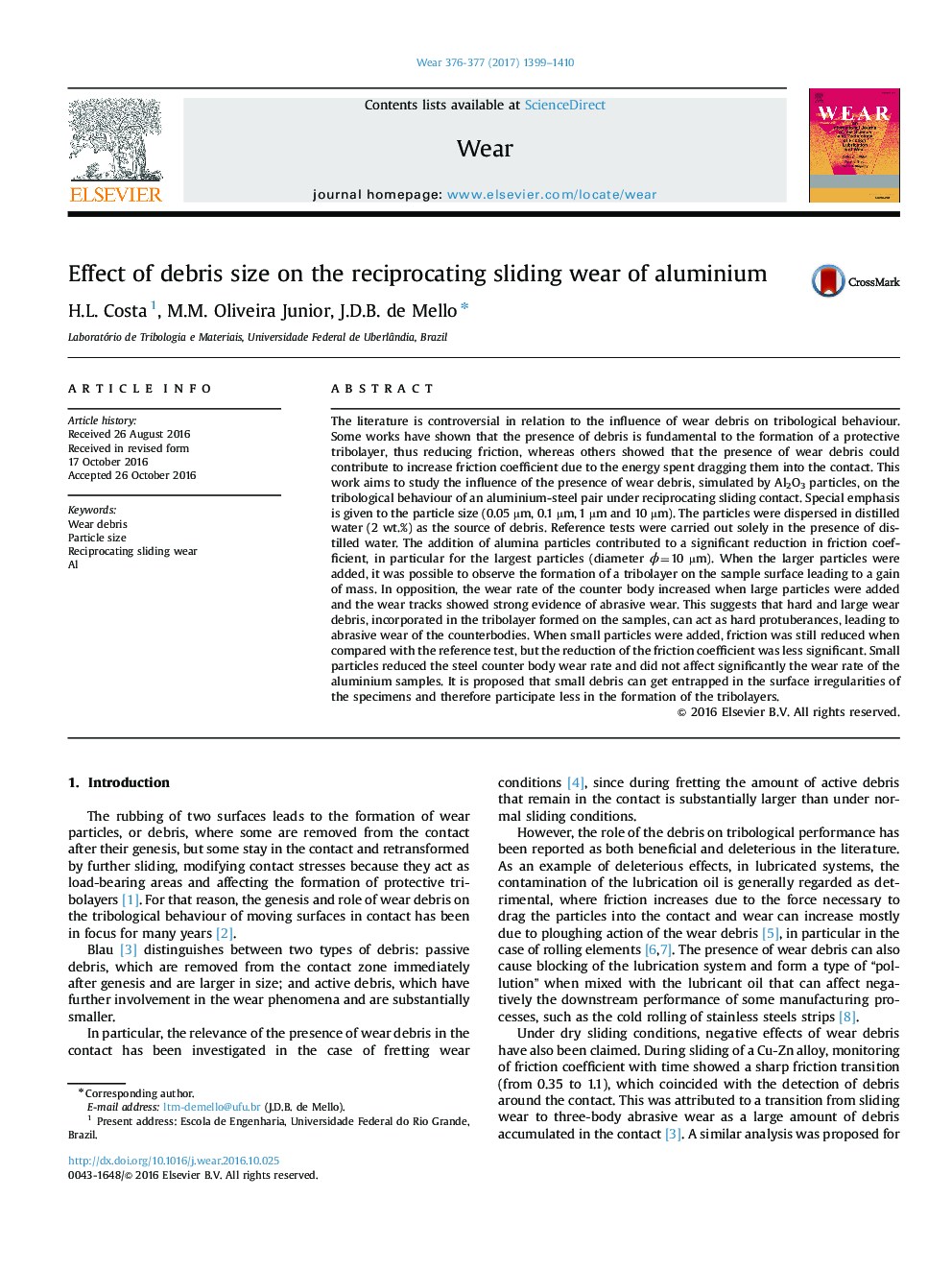| کد مقاله | کد نشریه | سال انتشار | مقاله انگلیسی | نسخه تمام متن |
|---|---|---|---|---|
| 4986586 | 1454952 | 2017 | 12 صفحه PDF | دانلود رایگان |
عنوان انگلیسی مقاله ISI
Effect of debris size on the reciprocating sliding wear of aluminium
ترجمه فارسی عنوان
اثر اندازه ضایعات بر روی سایش متحرک کشویی آلومینیوم
دانلود مقاله + سفارش ترجمه
دانلود مقاله ISI انگلیسی
رایگان برای ایرانیان
کلمات کلیدی
بقایای بقایای، اندازه ذرات، لباس کشویی متقاطع، ال،
موضوعات مرتبط
مهندسی و علوم پایه
مهندسی شیمی
شیمی کلوئیدی و سطحی
چکیده انگلیسی
The literature is controversial in relation to the influence of wear debris on tribological behaviour. Some works have shown that the presence of debris is fundamental to the formation of a protective tribolayer, thus reducing friction, whereas others showed that the presence of wear debris could contribute to increase friction coefficient due to the energy spent dragging them into the contact. This work aims to study the influence of the presence of wear debris, simulated by Al2O3 particles, on the tribological behaviour of an aluminium-steel pair under reciprocating sliding contact. Special emphasis is given to the particle size (0.05 µm, 0.1 µm, 1 µm and 10 µm). The particles were dispersed in distilled water (2 wt.%) as the source of debris. Reference tests were carried out solely in the presence of distilled water. The addition of alumina particles contributed to a significant reduction in friction coefficient, in particular for the largest particles (diameter Ï=10 µm). When the larger particles were added, it was possible to observe the formation of a tribolayer on the sample surface leading to a gain of mass. In opposition, the wear rate of the counter body increased when large particles were added and the wear tracks showed strong evidence of abrasive wear. This suggests that hard and large wear debris, incorporated in the tribolayer formed on the samples, can act as hard protuberances, leading to abrasive wear of the counterbodies. When small particles were added, friction was still reduced when compared with the reference test, but the reduction of the friction coefficient was less significant. Small particles reduced the steel counter body wear rate and did not affect significantly the wear rate of the aluminium samples. It is proposed that small debris can get entrapped in the surface irregularities of the specimens and therefore participate less in the formation of the tribolayers.
ناشر
Database: Elsevier - ScienceDirect (ساینس دایرکت)
Journal: Wear - Volumes 376â377, Part B, 15 April 2017, Pages 1399-1410
Journal: Wear - Volumes 376â377, Part B, 15 April 2017, Pages 1399-1410
نویسندگان
H.L. Costa, M.M. Oliveira Junior, J.D.B. de Mello,
